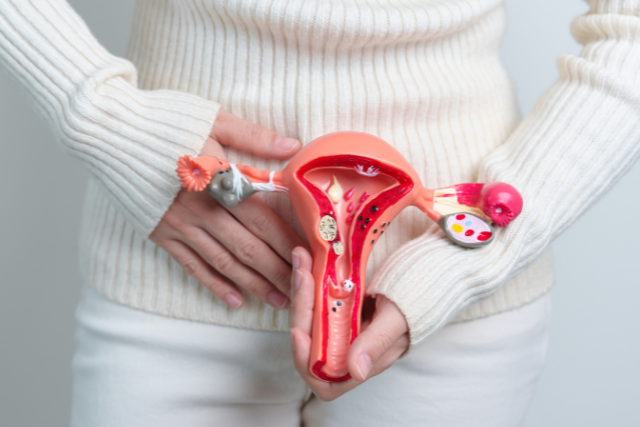How much time is left on my biological clock?
Have you ever wondered about your fertility potential? Ovarian reserve testing is a series of diagnostic tests that can predict your future fertility. These tests can help determine approximately how many eggs you have remaining. With this information, you can make an informed decision on your family building goals.
Understanding ovarian reserve
When a female baby is born, her ovaries contain all the eggs she will ever have. When she reaches puberty, her menstrual cycle will begin, and her eggs will begin to mature and ovulate every month. As she gets older, her egg count begins to decline until they eventually run out. When the eggs run out, and the woman is no longer ovulating, she enters menopause and her monthly menstrual cycle stops. Every woman is different and based on their individual genetics, history, and diagnosis, each woman will run out of eggs at a different time. Ovarian reserve testing can help estimate how much time is left before the eggs run out.
Ovarian Reserve Tests
Antral Follicle Count (AFC): Found inside the ovaries, this is the number of early-stage follicles that can be visualized with transvaginal ultrasound. A follicle is a fluid-filled structure that contains an egg. This ultrasound evaluation can offer a good predictor of ovarian reserve. A high number of antral follicles indicates a substantial ovarian reserve, while lower counts can indicate a declining egg count. This number can fluctuate slightly month to month.
Follicle Stimulating Hormone (FSH): A hormone signal released from the pituitary gland (located in the brain) that stimulates the follicle to recruit and mature the egg. A high FSH level can indicate that the pituitary gland is working harder than normal to get a follicle to respond. This is a blood test that is cycle-day dependent, meaning it should be drawn on cycle day 2, 3, or 4 of the menstrual cycle.
Estrogen (E2): This is the hormone produced by the egg. Collection should occur along with the FSH level early in the menstrual cycle. This level can help confirm the FSH level is accurate.
Anti Mullerian Hormone (AMH): This hormone is produced by the antral follicles. A high AMH level indicates a large number of eggs available. A lower number may indicate a decreasing ovarian reserve.
How do you interpret the results?
After performing these fertility tests, your provider gains a better understanding of your reproductive potential and can recommend a treatment plan.
Normal Ovarian Reserve
If your ovarian reserve test results come back within normal limits, your provider will continue the fertility evaluation by completing a detailed history, a physical exam, and ordering a variety of other tests. Depending on the results of your testing and your personal goals, your physician may recommend starting with low-level treatment including ovulation induction medications (letrozole or clomid citrate), timed intercourse, or intrauterine insemination. If you are not ready for pregnancy yet and are just curious about your fertility, your provider may offer the option to freeze your eggs or reassure you that your ovarian reserve is in the appropriate range.
Low Ovarian Reserve
When ovarian reserve test results are low, this can be due to advancing age or for an unknown reason. Treatment options for diminished ovarian reserve can vary depending on personal preference. The provider may offer the patient the opportunity to freeze their eggs for future use, proceed with In Vitro Fertilization (IVF), or use donor eggs.
High Ovarian Reserve
Sometimes ovarian reserve testing comes back high. This can indicate polycystic ovarian syndrome (PCOS). A high antral follicle count and an elevated anti-mullerian hormone level can be indicators of PCOS. Your provider will take a detailed medical history and determine if you have the diagnosis. There are a variety of fertility treatment options available for patients with PCOS.
Not a Perfect Science
While ovarian reserve testing is important, the numbers are not absolute. These tests can provide an estimation of the patient’s fertility at present. Ovarian reserve testing does not give any information on the quality of the eggs, just the approximate number of eggs remaining. The woman’s eggs will continue to decline as she ages. Ideally, we don’t want to wait until ovarian reserve is critically low before treatment is initiated. If someone has low ovarian reserve, it may take multiple rounds of treatment to achieve the desired outcome.
Start Your Journey
For those seeking further guidance and support on their fertility journey, visit Bluprint Fertility. Our expert team is dedicated to helping you understand your ovarian reserve and explore the best options tailored to your needs. Start your path to parenthood with us today.


